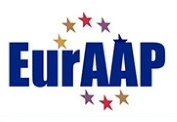Terrestrial and non-terrestrial networks unification towards 6G
Tuesday, 3 June 2025, 9:00 – 12:30, room 1.2-1.4
Organisers:
- Adam Kapovits (Eurescom GmbH, )
- Maria Guta (European Space Agency, )
- Tomaso de Cola (Deutsches Zentrum für Luft- und Raumfahrt (DLR), German Aerospace Center, DE)
- Alessandro Vanelli-Coralli (ALMA MATER STUDIORUM – Univ. Bologna, IT)
- Konstantinos Ntontin (Univ. Luxemburg, LU)
- Marten Ericson (Ericsson, SE)
- Babak Mafakheri (Safran Passenger Innovations GmbH, DE)
Motivation and Background
The incorporation of NTN communication into 5G and upcoming 6G communication infrastructures has become a very important topic signified by the emergence and track gained by some proprietary satellite Direct to Smartphone solution offerings, very prominently Starlink, among others. Furthermore, we notice that both in the Republic of Korea and in Japan NTN represents an important element of 6G research and innovation programs with very considerable budget devoted to such aspects. In Europe, the multibillion-euro IRIS2 program launched by the European Commission signifies and underpins the demand for NTN infrastructure advancements and European technology sovereignty. Our workshop proposal should be considered and seen in this context.
We propose to bring and share the most recent results regarding NTN system and technology advancements towards 3GPP NTN standardized solutions, towards 6G TN and NTN unification, including among others the following:
- Handover from TN to NTN and NTN to TN
- Direct to device
- AI in radio resource management
- Multilink connectivity
- On-board processing, including regenerative payloads, gNB in space and edge processing in space
- Spectrum use and sharing
- Direct to cell use case and
- Various proof of concepts and advanced on ground and in orbit testbeds
Structure
09:00 – 09:05 – Opening
- Adam Kapovits, Eurescom GmbH, Cristina Cullell-March (programme officer at the SNS JU office)
09:05 – 10:30: Session 1
- Hexa-X-II architecture overview and NTN related activities, Mårten Ericson, Ericsson, (Hexa-X II)
This talk will explore various NTN architecture options in the 6G architecture. We propose several solutions to enhance handover procedures for NTN as well as mobility between NTN and TN networks. Additionally, the presentation demonstrates how our analytical derivations can facilitate the design of optimal dynamic spectrum sharing in integrated NTN-TN networks. - From architecture design to lab demonstrations: the 5G-STARDUST journey, Tomaso de Cola, DLR, (5G Stardust)
This talk illustrates the main directions taken from the 5G-STARDUST project with respect to a converged 5G-NTN network architecture and overviews the design of an integrated testbed to demonstrate the potentials for multi-path protocol exploitation in 5G-NTN integrated networks. In particular, the main building blocks of the proof-of-concept are presented and the reference demonstration scenarios are also outlined. - Architectures and air interfaces for 6G NTN systems, Alessandro Vanelli-Coralli, Alma Mater Studiorum – Università di Bologna, (6G-NTN)
The 6G-NTN project, started in January 2023, envisions a Non-Terrestrial Network (NTN) component fully integrated into the future 6G infrastructure to better meet the vertical industry’s needs and consumer market expectations. To achieve its vision, the 6G-NTN project has been researching and developing a revolutionary sustainable three-dimensional (3D) network infrastructure concept for 6G, targeting the provision of ubiquitous coverage with high data rate communications thanks also to the design of functional split in space, the identification of the 6G air interface enablers, and the development of a low-cost and small form factor antenna for vertical market. By its closure at the end of 2025, the project will have defined a roadmap for the development of the necessary technical, regulatory, and standardisation building blocks to enable integrated NTN service provisioning and disruptive market offerings in the 2030-35 timeframe. This presentation will introduce the concept of the distributed architecture developed in the project, characterized by a sustainable constellation design with flexible Size, Weight, and Power (SWAP) trade-off, and will discuss the Air Interface enablers, including waveforms’ analysis and spectrum coexistence in future 6G NTN systems. - ETHER: 3 lab demonstration activities towards our 3D unified network vision, Konstantinos Ntontin, University of Luxemburg, (ETHER)
This talk will go through the proof-of-concept preparation activities related to the 3 use cases examined in ETHER, namely: 1) Service provision to delay-tolerant IoT applications; 2) Vertical handovers for direct-to-device handheld access; 3) Air-space safety critical operations. Particular emphasis will be given to use case 2) for which a hardware proof-of-concept will be showcased at our demo booth at EuCNC. - Paving the Way Towards an NTN-Native 6G Ecosystem: the NexaSphere Approach, Babak Mafakheri, Safran, (NexaSphere)
The NexaSphere project is aimed at providing the main building blocks to achieve a seamless unification between TN and NTN in common 6G ecosystem, by addressing the main aspects from antennas to network integration, through AI-based network control and orchestration optimisation. This short paper overviews the main direction of the projects and introduces the main development streams from industry and research exploitation standpoint.
Coffee break
11:00 – 12:30: Session 2
- Highly flexible routing adapted to mega-constellations, Marius Corici, Fraunhofer FOKUS, (ESA 6G SmartSat)
Future 6G networks envision integrating large mega-constellations, but their constantly shifting topologies overwhelm traditional routing protocols unable to cope with the rapid changes and resource limits of space. To overcome this, the ESA 6G SmartSat project introduced the Topology Semantic Routing (TSR), a novel approach specifically designed for this dynamic environment. TSR empowers satellites to make very simple, real-time routing adjustments based purely on local conditions like link quality, bypassing issues autonomously without network-wide signaling. This significantly cuts computational load and overhead, boosting network resilience and efficiency, ultimately enabling the seamless integration of NTNs and TNs and through this to realize the global connectivity promise of 6G. - Technologies and Architectures for 3D Networks, Markus Breitbach, Deutsche Telekom and Armin Dekorsy, UNiversity of Bremen, (6G-TakeOff)
6G-TakeOff is now in its final year. During the project, major progress has been made on requirements and concepts for a unified 3D network architecture, as well as on enabling technologies and components. This presentation will highlight developments in steerable antennas and RF components—key for integrating HAPS and satellites into terrestrial networks. It will also cover advancements in IoT, NTN-supported MEC, and architectural insights. The contribution provides a concise overview of key achievements and encourages discussion on practical applications and future challenges. - 6G Satellite Precursor – In Orbit Laboratory, Thomas Heyn, Fraunhofer Institute for Integrated Circuits, (ESA 6G LINO)
The 6G LINO cube satellite mission represents a crucial advancement towards the 3GPP standardization of NTN (Non-Terrestrial Networks), offering invaluable insights into the integration of space assets within terrestrial mobile networks. This mission unfolds in two distinct phases: an initial phase focused on development, launch, and in-orbit operations limited to consortium members, followed by a Laboratory in Orbit phase characterized by an open approach. This openness allows for broader experimentation beyond the consortium’s capabilities, aligning the mission with practical 6G applications grounded in 5G-Advanced standards. The project will implement four significant use cases that illustrate key future 6G applications during its first phase.
The 6G LINO mission promises several benefits, including a fully integrated gNB (Next Generation Node B) with UPF (User Plane Function) capabilities, voice call functionality over 5G-NR NTN using both transparent and regenerative payload architectures, and dynamic software upgrades for testing innovative NTN waveforms. The project also includes AI-based spectrum monitoring in S-band and Ka-band to enable dynamic spectrum access for integrated terrestrial and non-terrestrial networks. Following the successful completion of the Mission and System Requirements review (SRR) in October 2024, the project is on track for the Preliminary Design Review (PDR), further solidifying its commitment to advancing the field of satellite communications and paving the way for future 6G innovations.








